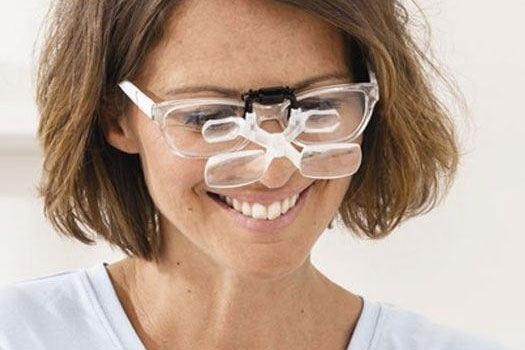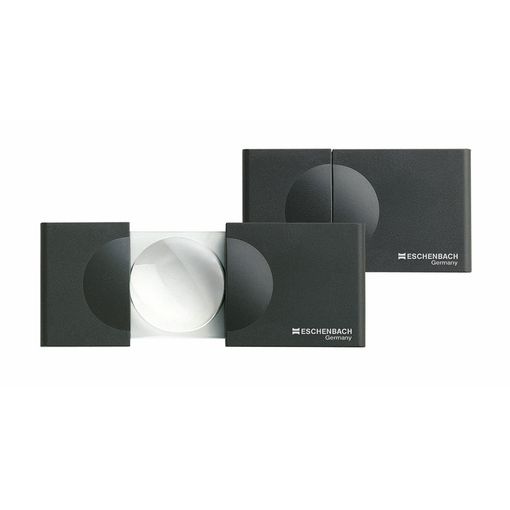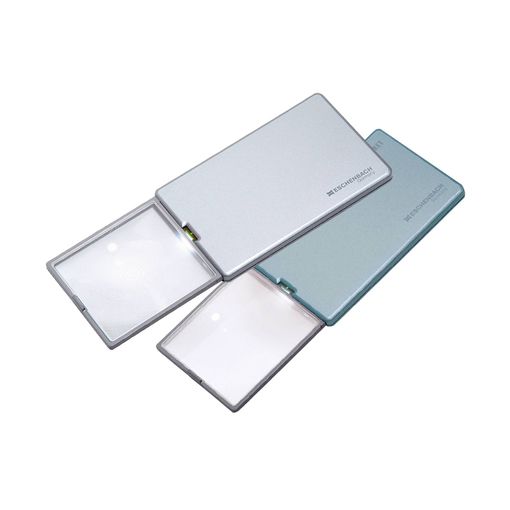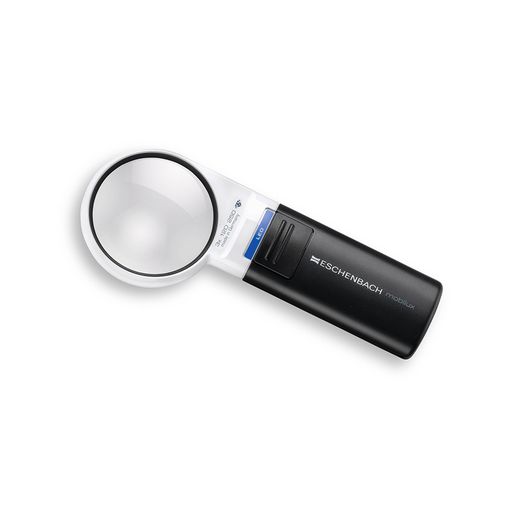How to choose a magnifier
As we get older, many parts of our bodies start to show signs of ageing and our eyes are no exception. This may just mean new glasses but over time more severe problems can occur that require additional help.
One vital factor for best visual function is the amount of light, with a 60 year old needing about 15x times more light than a 10 year old to achieve the same visual performance. All these factors are important when choosing a magnifier and many come with built-in illumination to give light which is directly focused onto the task in hand.
The other consideration is what the magnifier will be used for. Some are better suited to specific tasks and purchasing more than one may be necessary.
So if you are among the growing number of people with lower vision, you may find that a magnifier or low vision aid can assist with tasks such as reading fine print, sewing or viewing classroom presentations.
Choosing the right power
As a general rule with magnifiers, it is best to choose the lowest power that does the job. To this end you can download our magnification guide. Print this off actual size and then read down as low as you can.
To the right of the line is a magnification figure which will indicate the most likely power you need in order to be able to read the bottom line.
Types of magnifiers
Hand Held Magnifiers
As the name suggests these are designed to be held in the hand and can be moved into position to get the best image. The range of magnification is often still very wide and some will come with integrated lighting to enhance vision further. They are often smaller or compact in size and are ideal for carrying with you for easy-to-use out and about vision.
Stand Magnifiers
Stand magnifiers are set to be at the correct position to give the optimum image focus. They tend to be slightly bulkier so are less suitable for carrying around. However, they tend to leave the hands free to hold or manipulate the near task underneath. The range of powers/magnification is still good but often slightly less than for hand magnifiers.
Spectacle Mounted Magnifiers
These are usually lower powered but have a much longer working distance. This makes them ideal for working at arm's length and are often used for hobbies such as modelling or fishing. There are binocular and monocular versions, the latter tending to be available with higher magnifications.
Video and Digital Magnifiers
These specialised systems can be linked to a computer or TV system and give much larger degrees of magnification and over a larger area. Often a whole page of a magazine can be magnified and viewed in one go. Levels of magnification can reach 40x (compared to 10x or 12x for hand and stand magnifiers). These systems cost several hundreds of pounds and are generally supplied following a careful face to face consultation and demonstration.
Telescopic Systems
All of the above types of magnifier have been for reading or near vision tasks. It is also possible to get telescopic systems that can magnify in the distance as well - ideal for watching TV or picking up distance objects when out and about. They cannot be used while walking around but when stood or sat stationary. These tend to be in the form of glasses or attached to distance spectacles and have good magnification but often a small field of view. These systems are again generally supplied following a careful face to face consultation and demonstration.
Related products
Eschenbach Maxi-plus round-the-neck magnifier
£52.00
magnification 2.0x and 2.0x/4.0x
Eschenbach easyPOCKET LED illuminated 'credit card' pocket magnifier
£73.00
magnification 3.0x and 4.0x
Eschenbach Mobilux LED illuminated pocket magnifier
£63.00
magnification 3.0x to 12.5x














